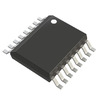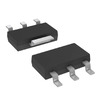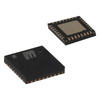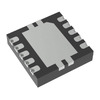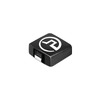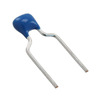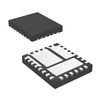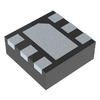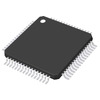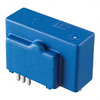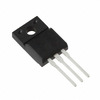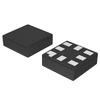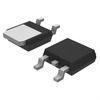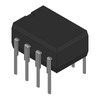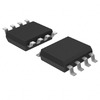Mastering the BLDC Hall Sensor: The Key to Precise Position Encoding
The innovative fusion of brushless DC (BLDC) motors and Hall sensors marks a significant stride in the evolution of modern motor technology. This article delves deeply into Hall sensors' pivotal role in BLDC motors. It focuses especially on enhancing motor performance and reliability through precision sensing. We begin with the operational principles of the three Hall effect sensors integrated into BLDC motors. Then, we examine their use in applications like wheel hub motors. Finally, we explore strategies for optimizing sensor technology. Our goal is to provide a comprehensive analysis of how this synergy can elevate the performance of contemporary technological devices.
Catalog
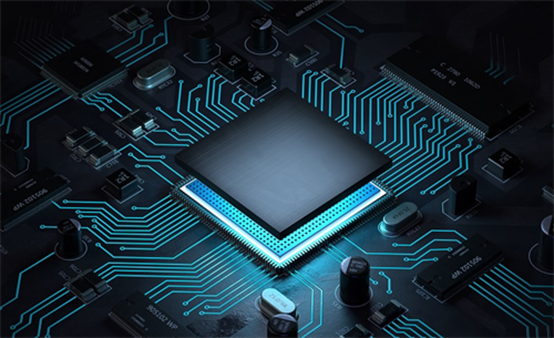
BLDC motors, amidst a plethora of modern engineering and electronic equipment, stand out as the preferred choice. Their high efficiency, low noise, longevity, and exceptional reliability set them apart. Integral to these motors, the trio of Hall effect sensors form the heart of the control system. Utilizing the Hall effect principle, these sensors discern magnetic field variations and transform them into voltage signals. This transformation allows for meticulous monitoring of the motor's rotor position and speed. It ensures the motor control unit (MCU) receives precise information for fine-tuning speed and torque.
In BLDC motor applications, Hall sensors chiefly aim for precise sensor position control. They detect the magnetic poles' position in the permanent magnet rotor with accuracy. This detection plays an important role in motor starting, smooth acceleration and deceleration, and detailed speed regulation. Additionally, sensor feedback aids in implementing advanced control strategies, like dynamic torque control and fault diagnosis.
Practically, Hall sensors enhance motor performance in multiple facets. For instance, they offer durable, low-maintenance, non-contact position detection. Their swift response capability ensures real-time feedback for smoother motor operation and enhanced dynamic response. By refining sensor layout and control algorithms, motor efficiency can be further elevated, reducing energy consumption and extending service life.
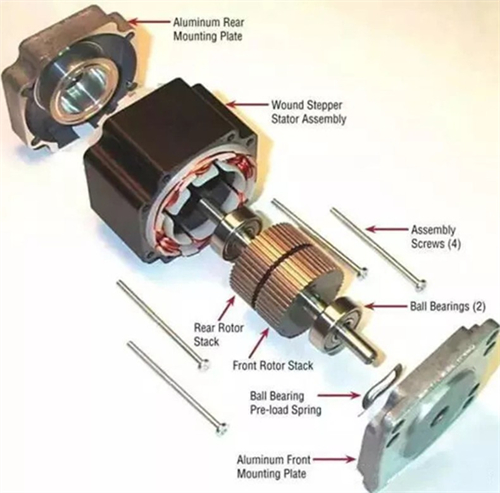
Figure 1: Brushless DC motor
This article delves deeply into the transformative use of brushless DC (BLDC) motors in personal transportation. It specifically examines the prevalent 10-inch diameter single-shaft hub motors in electric skateboards and self-balancing hoverboards. These in-wheel motors often employ externally rotating, heavy-duty BLDC motors. Precision-designed, they excel in power transmission and durability.
The hub motor's technical architecture is ingenious. The stator is fixed at the shaft's center, and the magnet is inside the hub on the rotor. This arrangement drastically cuts mechanical loss during power transmission. It boosts energy conversion efficiency. This innovation simplifies the motor structure. It seamlessly integrates the motor with the wheels. The design also markedly reduces the number and weight of vehicle components. This enhances space efficiency and the vehicle's overall response speed.
In vehicles like electric skateboards and hoverboards, motor performance demands are exacting. The 10-inch wheel motor is fine-tuned for potent drive and swift acceleration. It also maintains low noise and heat levels. Given the need for motors with high durability and reliability, the materials and manufacturing processes for these in-wheel motors are meticulously chosen and refined. They're built to endure diverse road conditions over extended periods.
To further advance performance, modern BLDC wheel hub motors integrate cutting-edge sensors. Hall sensors and temperature sensors enable real-time monitoring and feedback. These sensors empower the motor control system to dynamically alter parameters like current and phase angle. This is based on varying usage conditions, ensuring peak efficiency and power output. Moreover, their synergy with the battery management system makes the in-wheel motor use battery energy more effectively. It extends the cruising range and safeguards against battery overcharging and discharging.

Figure 2: BLDC Hall Sensor
The Hall sensor, a device harnessing the Hall effect, serves to detect magnetic field strength. When a magnetic field intersects a conductor-bearing current, such as a semiconductor or metal, it induces a voltage differential across the conductor—this is the Hall voltage. Relying on this principle, Hall sensors detect magnetic field shifts, translating them into electrical signals.
In the complex interaction of 27 electromagnetic stator coils and 30 permanent magnet BLDC hub motors, Hall sensors precisely detect the position of the rotor, which plays a key role in modulating the stator coil current. Specifically:
In terms of sensor layout and marking: In these motors, Hall sensors are strategically positioned at 120-degree intervals. This placement is key to fully capturing the rotor's magnetic field alterations. Each sensor, labeled U, V, or W, not only aids in identification but also signifies its connection to a specific stator coil. This systematic approach to marking and arrangement bolsters motor consistency and dependability.
Applying the working principle: The hub motor in action prompts the rotor's permanent magnets to alter the stator's surrounding magnetic field. Hall sensors track these fluctuations, generating relevant electrical signals. These are then processed, controlling the motor driver's current flow to the stator coil. This intricate process allows for fine-tuned control over the motor's speed and direction.
Delving into technical details: The Hall sensor's output voltage varies linearly with magnetic field strength. These voltages are digitalized for the motor control system. The motor controller, receiving these signals, adjusts the current to alter torque and speed. The Hall sensor's precision and response rate are crucial to the motor's performance, demanding exacting design and manufacturing standards.
A deeper comprehension of Hall sensors in BLDC in-wheel motors unveils their critical role in electric vehicles, industrial automation, and various consumer electronics. Ongoing research and innovation continually enhance these sensors' performance and efficiency, tailoring them to a broader spectrum of applications and demands.
Pulse Count
In the realm of pulse generation, each sensor, upon detecting a magnet, emits 10 pulses. This activity unfolds within a 120-degree arc, effectively the range of a single sensor, culminating in the production of 30 pulses. Consequently, a full 360-degree rotation—encompassing the scope of three sensors—yields a total of 90 pulses.
Periodic and Binary Combination
A pulse sequence, oscillating between high and low levels, emanates from each sensor. Complex combinations of these highs and lows—exemplified by sequences like 000, 001, 010, through to 111—translate into precise motor position representations.
Position Sensing
By delving into the pulse sequence output by the sensors, the motor's position is ascertained with remarkable accuracy. Such precision in positional data is crucial for the fine-tuned control of the motor's velocity and direction.
Data Reliability
Hall sensors emit digital signals, inherently more resistant to noise interference than their analog counterparts. The reliability of these pulses thus becomes a cornerstone, offering a stable and dependable input for the motor control system.
Dynamic Response Optimization
Tailoring the system to meet specific application needs involves either altering the angles between sensors or increasing their number. Such adjustments can markedly enhance both the response speed and the accuracy of the system.
Environmental Adaptability
A thorough assessment and subsequent optimization of Hall sensors' performance across diverse working conditions—be it varying temperatures, humidity levels, or vibration intensities—ensures their high functionality under an array of environmental scenarios.
These technical intricacies and analytical deep dives afford a more layered and precise understanding of Hall sensor pulse computations and their utility in motor control. Far from being mere supplementary information, this represents a significant leap in the practical application and technological evolution of Hall sensors.
Delving into Hall sensors' role in brushless DC motors reveals their pivotal importance across sectors, including electric vehicles, personal transport, and industrial automation. It highlights the necessity of ongoing innovation. Precision in controlling and optimizing Hall sensors enhances BLDC motor performance, paving the way for smarter future devices and systems. As technology progresses and R&D intensifies, the synergy of Hall sensors and BLDC motors continues to be instrumental in enhancing efficiency, reliability, and intelligent control. This union promises to wield a profound and lasting impact on contemporary technology.
About us
ALLELCO LIMITED
Read more
Quick inquiry
Please send an inquiry, we will respond immediately.
→ Previous

The Seven Segment Display, a classic in the realm of display devices, boasts a history as intriguing as its structure is straightforward. Its invention marks a cornerstone in electronic displays, driven by simplicity, clarity, and ease of control. In this article, we delve deep, unraveling the seven...
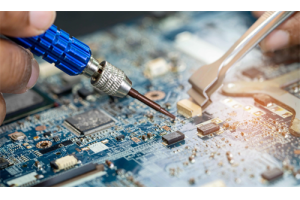
In the rapidly changing electronics industry, circuit board manufacturing and repair are at the core of technological innovation and fine craftsmanship. Experts and enthusiasts constantly interact with various circuit boards involving numerous complex connection technologies, among which resistance ...
→ Next

7-Segment Display: Pin Assignment, Operating Principle, and Datasheet
on January 15th

An In-Depth Analysis of Resistance Welding Technology
on January 10th
Popular Posts
-

What is GND in the circuit?
on January 1th 2937
-

RJ-45 Connector Guide: RJ-45 Connector Color Codes, Wiring Schemes, R-J45 Applications, RJ-45 Datasheets
on January 1th 2499
-

Fiber Connector Types: SC Vs LC And LC Vs MTP
on January 1th 2089
-

Understanding Power Supply Voltages in Electronics VCC, VDD, VEE, VSS, and GND
on November 9th 1890
-

Comparison Between DB9 and RS232
on January 1th 1761
-

What Is An LR44 Battery?
Electricity, that ubiquitous force, quietly permeates every aspect of our daily lives, from trivial gadgets to life-threatening medical equipment, it plays a silent role. However, truly grasping this energy, especially how to store and efficiently output it, is no easy task. It is against this background that this article will focus on a type of coin cell battery that may seem insignificant on the...on January 1th 1712
-

Understanding the Fundamentals:Inductance Resistance, andCapacitance
In the intricate dance of electrical engineering, a trio of fundamental elements takes center stage: inductance, resistance, and capacitance. Each bears unique traits that dictate the dynamic rhythms of electronic circuits. Here, we embark on a journey to decipher the complexities of these components, to uncover their distinct roles and practical uses within the vast electrical orchestra. Inductan...on January 1th 1652
-

CR2430 Battery Comprehensive Guide: Specifications, Applications and Comparison to CR2032 Batteries
What is CR2430 battery ?Benefits of CR2430 BatteriesNormCR2430 Battery ApplicationsCR2430 EquivalentCR2430 VS CR2032Battery CR2430 SizeWhat to look for when buying the CR2430 and equivalentsData Sheet PDFFrequently Asked Questions Batteries are the heart of small electronic devices. Among the many types available, coin cells play a crucial role, commonly found in calculators, remote controls, and ...on January 1th 1551
-

What Is RF and Why Do We Use It?
Radio Frequency (RF) technology is a key part of modern wireless communication, enabling data transmission over long distances without physical connections. This article delves into the basics of RF, explaining how electromagnetic radiation (EMR) makes RF communication possible. We will explore the principles of EMR, the creation and control of RF signals, and their wide-ranging uses. The article ...on January 1th 1538
-
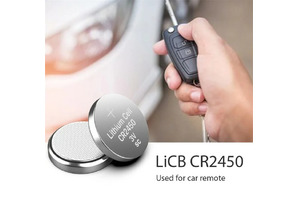
CR2450 vs CR2032: Can The Battery Be Used Instead?
Lithium manganese batteries do have some similarities with other lithium batteries. High energy density and long service life are the characteristics they have in common. This kind of battery has won the trust and favor of many consumers because of its unique safety. Expensive tech gadgets? Small appliances in our homes? Look around and you'll see them everywhere. Among these many lithium-manganes...on January 1th 1511





